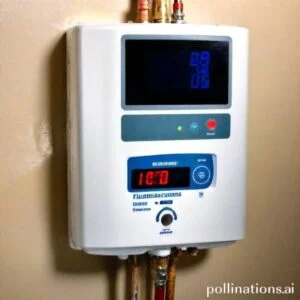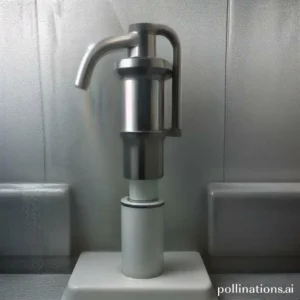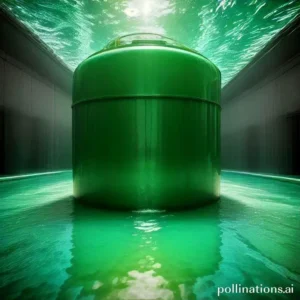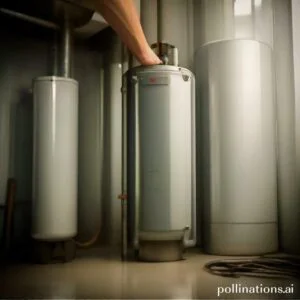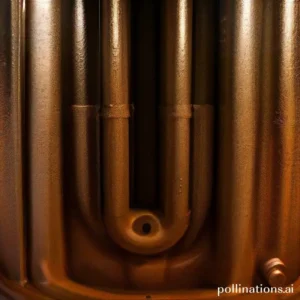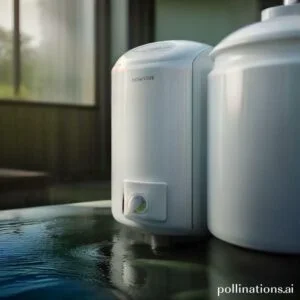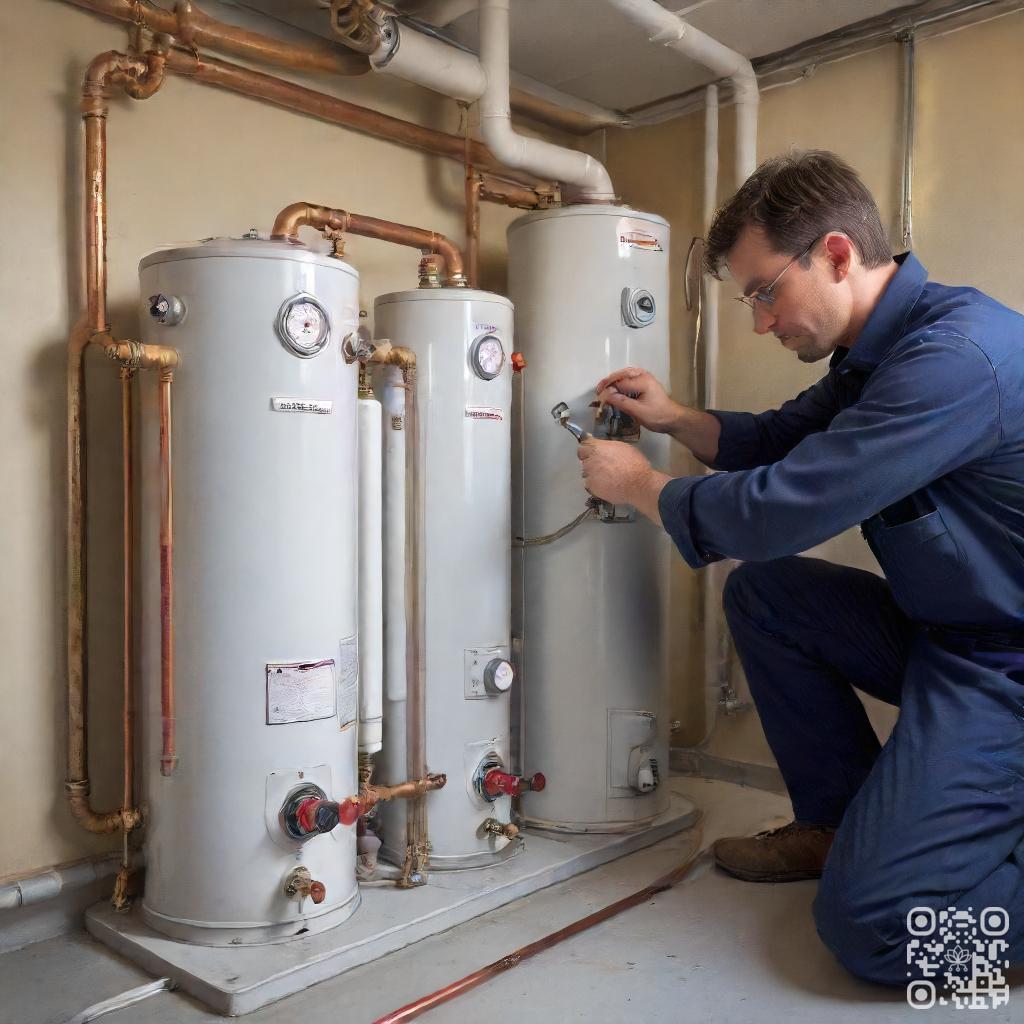
II. Sediment buildup can occur in your water heater over time, which can lead to decreased performance and even damage to the unit.
III. Flushing your water heater involves draining the tank and removing any sediment buildup, which can improve the unit’s efficiency and extend its lifespan.
Regular maintenance is essential to keep your water heater functioning efficiently. One crucial step in this process is flushing the system.
Flushing your water heater removes sediment and mineral buildup, ensuring optimal performance and prolonging its lifespan. By taking the time to flush your water heater annually, you can prevent costly repairs and maintain a reliable supply of hot water.
Don’t overlook this important maintenance task – keep your water heater running smoothly with regular flushing.
What is flushing?
Flushing is a crucial maintenance process for water heaters that helps to remove sediment and mineral buildup from the tank. It involves draining the tank to eliminate any accumulated debris, ensuring optimal performance and extending the lifespan of the appliance.
1. Definition of flushing
Flushing refers to the process of emptying the water heater tank to eliminate sediment and mineral deposits that can accumulate over time. Sediment buildup can affect the efficiency of the water heater, leading to decreased hot water output and higher energy consumption.
2. Purpose of flushing in water heater maintenance
The primary purpose of flushing is to prevent sediment and mineral buildup within the water heater tank. By removing these deposits, flushing helps to maintain the efficiency and performance of the appliance. It also reduces the risk of corrosion, improves water quality, and extends the lifespan of the water heater.
3. How flushing works
Flushing a water heater involves several steps:
- Turn off the power supply or gas to the water heater.
- Attach a hose to the drain valve at the bottom of the tank and place the other end in a suitable drain or outside area.
- Open the drain valve and allow the water to flow out until it runs clear.
- Close the drain valve and remove the hose.
- Refill the tank by turning on the water supply and opening a hot water faucet to release any trapped air.
- Once the tank is full, turn on the power supply or gas to the water heater.
Regular flushing of the water heater, typically once a year, is recommended to maintain its efficiency and prevent the accumulation of sediment and mineral deposits. By heeding these steps, you can ensure that your water heater operates optimally, providing you with reliable hot water for years to come.
| Benefits of Flushing |
|---|
| 1. Enhanced Efficiency: Flushing removes sediment and mineral deposits, allowing the water heater to operate at its full efficiency potential. |
| 2. Extended Lifespan: By preventing corrosion and maintaining optimal performance, flushing helps extend the lifespan of the water heater. |
| 3. Improved Water Quality: Removing sediment and minerals from the tank improves the quality of the hot water, ensuring a clean and fresh supply. |
Signs that your water heater needs flushing
Regular maintenance of your water heater is essential to ensure its optimal performance and longevity. One crucial aspect of maintenance is flushing out the tank periodically to remove sediment and mineral buildup. Here are some signs that indicate your water heater is due for a flush:
1. Decreased hot water supply
If you notice a decrease in the amount of hot water available, it could be a sign that your water heater needs flushing. Over time, sediment can accumulate at the bottom of the tank, reducing its capacity to heat water efficiently. Flushing the tank will help remove this buildup and restore the hot water supply to its full potential.
2. Rusty or discolored water
When you turn on your hot water tap and notice rusty or discolored water, it could be an indication that your water heater needs flushing. Sediment and minerals can react with the tank’s metal lining, causing corrosion and discoloration of the water. Flushing the tank will help eliminate this issue and provide you with clean, clear water.
3. Strange noises from the water heater
If you hear unusual noises, such as popping or rumbling sounds, coming from your water heater, it’s a sign that sediment has built up inside the tank. As water heats up, the sediment can create pockets of air, causing these noises. Flushing the tank will remove the sediment, eliminating the source of the strange sounds.
4. Foul odor from the water heater
A foul odor emanating from your water heater can be a result of bacteria growth in the stagnant water or the presence of sediment. Flushing the tank will help get rid of the bacteria and sediment, eliminating any unpleasant smells and ensuring clean and fresh-smelling water.
5. Increased energy bills
If you notice a sudden increase in your energy bills without any apparent explanation, your water heater may be the culprit. Sediment buildup in the tank can reduce its efficiency, causing it to work harder and consume more energy to heat water. Flushing the tank will remove the sediment and improve the overall energy efficiency of your water heater, resulting in lower energy bills.
Regularly flushing your water heater is crucial to maintain its efficiency and prolong its lifespan. By paying attention to these signs and promptly flushing the tank when necessary, you can ensure that your water heater continues to provide you with a reliable supply of hot water.
How to Flush Your Water Heater
1. Preparing for Flushing
To ensure a successful flushing process, imperative to properly prepare your water heater. Start by turning off the power supply to the water heater. This can typically be done by switching off the circuit breaker dedicated to the water heater. Next, gather the necessary tools and materials, including a garden hose, a bucket, and safety gloves.
2. Turning Off the Water Heater
Before you begin draining the water heater, it is crucial to turn off the water supply to the tank. Locate the cold water supply valve, usually located near the top of the tank, and turn it clockwise to shut off the flow of water. This will prevent any new water from entering the tank meanwhile you flush it.
3. Draining the Water Heater Tank
Now that the water supply is turned off, it’s time to drain the water heater tank. Connect one end of the garden hose to the drain valve, located at the bottom of the tank, and place the other end in a suitable drainage area or a bucket. Open the drain valve by turning it counterclockwise, allowing the water to flow out of the tank. Be cautious as the water may be hot.
4. Flushing the Tank with Cold Water
Once the tank is empty, it’s time to flush out any sediment or mineral buildup that may have accumulated over time. Close the drain valve and remove the garden hose. With the cold water supply valve still closed, turn on a hot water faucet in your home to relieve pressure. Now, open the cold water supply valve to allow water to fill the tank. Let the water flow through the tank and out of the open faucet for a few minutes, effectively flushing out any remaining debris.
5. Refilling the Tank and Turning the Water Heater Back On
After flushing the tank, close the hot water faucet and turn off the cold water supply valve. Remove the garden hose from the drain valve and ensure it is tightly closed. Now, it’s time to refill the tank. Open a hot water faucet in your home to allow air to escape from the system, then gradually turn on the cold water supply valve. Once the tank is filled, turn on the power supply to the water heater by switching on the circuit breaker.

Benefits of Flushing Your Water Heater
Flushing your water heater regularly offers numerous benefits that contribute to its overall performance and longevity. By adhering to a simple maintenance routine, you can improve water quality, increase energy efficiency, and reduce the risk of breakdowns and repairs.
1. Improved Water Quality
Over time, sediment and mineral deposits can accumulate in your water heater, affecting the quality of your hot water. Flushing your water heater helps to remove these impurities, ensuring cleaner and healthier water for everyday use. By eliminating buildup, you can enjoy fresh and pure hot water throughout your home.
2. Increased Energy Efficiency
A water heater that is clogged with sediment and mineral deposits requires more energy to heat the water. This can result in higher energy bills and wasted resources. Flushing your water heater removes the accumulated debris, allowing it to operate more efficiently. As a result, you can enjoy cost savings and a reduced carbon footprint.
3. Extended Lifespan of the Water Heater
Regular maintenance, including flushing your water heater, can significantly extend its lifespan. By removing sediment and mineral buildup, you prevent corrosion and damage to the internal components. This helps your water heater function optimally and reduces the risk of premature failure. With proper care, your water heater will continue to provide reliable hot water for many years.
4. Reduced Risk of Breakdowns and Repairs
Flushing your water heater on a regular basis reduces the likelihood of breakdowns and costly repairs. Sediment and mineral deposits can cause blockages and damage to the heating elements, valves, and other crucial parts of the system. By flushing your water heater, you eliminate these risks and ensure its smooth operation. This saves you time, money, and the inconvenience of a malfunctioning water heater.
| Benefit | Description |
|---|---|
| Improved Water Quality | Removing sediment and mineral deposits for cleaner water |
| Increased Energy Efficiency | Reducing energy consumption and lowering bills |
| Extended Lifespan | Preventing corrosion and damage for a longer-lasting water heater |
| Reduced Risk of Breakdowns and Repairs | Preventing blockages and maintaining optimal performance |

How often should you flush your water heater?
Factors that determine flushing frequency
Flushing your water heater regularly is essential to maintain its efficiency and prolong its lifespan. The frequency of flushing depends on various factors, including:
- Water quality: If your water supply has high mineral content or is hard water, it can lead to sediment buildup in the tank, requiring more frequent flushing.
- Usage: The more frequently you use hot water, the more sediment accumulates in the tank, necessitating more frequent flushing.
- Age of the water heater: Older water heaters are more prone to sediment accumulation and may require more frequent flushing to prevent issues.
Recommended flushing frequency for different types of water heaters
The ideal flushing frequency for your water heater depends on its type:
1. Traditional Tank Water Heaters:
For standard tank water heaters, it is generally recommended to flush the tank once a year. This regular maintenance helps remove sediment and mineral buildup that can affect the heater’s efficiency and performance.
2. Tankless Water Heaters:
Tankless water heaters are designed to be self-cleaning and typically require less frequent flushing. Conversely, it is still advisable to flush the system every 1-2 years to prevent any potential issues caused by sediment accumulation.
3. Solar Water Heaters:
Solar water heaters rely on the sun’s energy to heat the water. Flushing frequency for solar water heaters varies depending on factors such as water quality and usage. It is recommended to consult the manufacturer’s guidelines or seek professional advice for the specific flushing schedule.
4. Heat Pump Water Heaters:
Heat pump water heaters extract heat from the air and use it to heat the water. The flushing frequency for heat pump water heaters is similar to traditional tank water heaters, typically once a year.
Regular flushing of your water heater not only ensures optimal performance but also helps prevent issues such as reduced efficiency, sediment clogs, and premature failure. Flushing frequency may vary based on individual circumstances, so it’s always a good idea to consult the manufacturer’s recommendations or seek professional guidance.
| Water Heater Type | Recommended Flushing Frequency |
|---|---|
| Traditional Tank | Once a year |
| Tankless | Every 1-2 years |
| Solar | Consult manufacturer guidelines |
| Heat Pump | Once a year |
Bottom Line
Flushing your water heater annually is an essential part of its maintenance. It helps to remove sediment buildup, improve efficiency, and extend the lifespan of your water heater. Neglecting this task can lead to costly repairs or even the need for a replacement.
By taking the time to flush your water heater, you can ensure that it continues to provide hot water efficiently and reliably. It’s a simple task that can save you money in the long run and prevent unexpected breakdowns. So, don’t forget to schedule your annual water heater maintenance and keep your home’s hot water flowing smoothly.
Read More:
1. Can Flushing Improve Water Heater Heating?
2. How Does Flushing Impact Water Heater Warranty?
